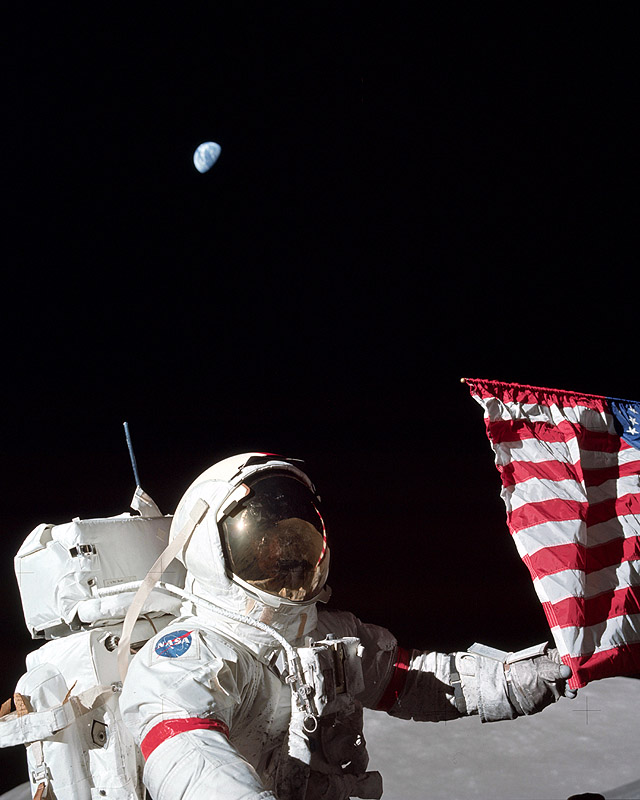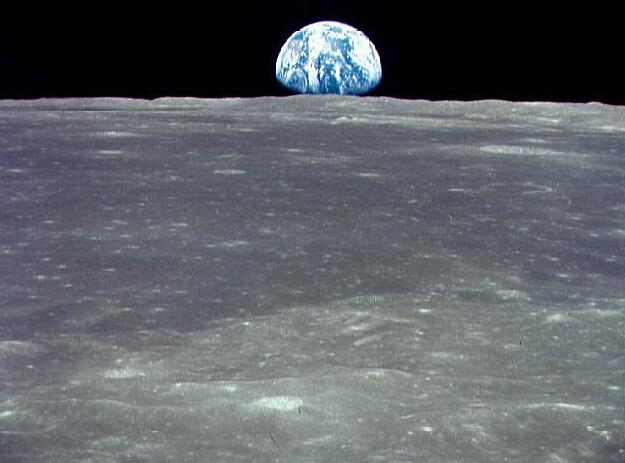Copyright 2014 Robert Clark
The National Research Council has released a report on NASA's plans for human spaceflight beyond low Earth orbit (BEO). It confirmed what many observers of the space program had already realized that NASA's current approach is unfocused and uninspiring, and most importantly unlikely to succeed:
Published time: June 05, 2014 02:39
Landing humans on Mars is unattainable for NASA if the space agency’s current strategy and level of funding are not modified in the near future, according to a new congressionally-mandated report.
…
Of the three pathways to Mars that NRC suggested, two were associated with a return to the moon. A lunar landing and habitat would hone technologies that could later be employed on a Mars mission, the report said.
The Obama administration has publicly expressed distaste for continued, expensive moon landings. In outlining US space policy in 2010, President Barack Obama said, “I just have to say pretty bluntly here: We’ve been there before.”
The third option outlined by the report includes the Asteroid Redirect Mission, a plan still in the study phase but currently endorsed by the Obama administration.
Such a mission would send robotic spacecraft to essentially grab and re-orbit an asteroid passing near Earth, allowing astronauts to take samples of the rock.
That mission, though, is not preferred by authors of the report. Safety issues and development of “dead end” technologies render the asteroid mission inferior if NASA wants to reach Mars, it said.
The asteroid option “cannot provide the flight frequency required to maintain competence and safety,” the report posits.
http://rt.com/usa/163736-mars-nasa-funding-strategy/
A major problem is that NASA is taking the Apollo approach to such missions, which required huge expenditures:
It’s time for NASA to abandon the Apollo mission model.
by John K. Strickland
Monday, June 23, 2014
What, then, is the opposite of the Apollo Mission model? It is the concept of a set of continuing missions designed to operate with a set of reusable space vehicles (both for crew and cargo), allowing the creation (and construction) of enduring infrastructure in specific locations in space and at surface destinations beyond low Earth orbit, using local materials, and making each subsequent mission easier, safer, and cheaper. One very critical aspect of this concept is the use of fully reusable spacecraft in an integrated cislunar transport system. Despite its name, such a cislunar system is not focused exclusively on access to the Moon, but to multiple cislunar and other inner solar system destinations. While at least one booster is about one year away from being operationally reusable, almost all spacecraft and other boosters are not, and according to some are in fact prohibited from being reused by NASA.
http://thespacereview.com/article/2537/1
The Apollo program absorbed 5% of the federal budget at the time. This is compared to the 0.5% NASA currently gets. If NASA were funded to the same extent as during the Apollo era, it would be getting in the range of $180 billion per year(!) That's not happening.
However, there is a way to get similar results without the huge payouts, and that is to follow the commercial space approach. Both SpaceX and Orbital Sciences were able to develop both launchers and capsules at 1/10th the cost of the usual fully-funded government projects. That's four separate systems able to cut 90% off the development costs. That is not just a coincidence.
Detractors of commercial space have complained the name is a misnomer for they still get federal funding. However, the name you apply to it is irrelevant. What is important is the results you get for an order of magnitude lower cost. For the commercial space approach to work though the companies involved have to be convinced they can make a profit on the projects, for it involves a public and private partnership where the companies share part of the development cost, rather than it being fully government funded.
But what BEO projects can be expected to make a profit? Well, SpaceX believes they can make a profit on making passenger flights to Mars, and the Golden Spike Company and Bigelow Aerospace believe they can make a profit by making crewed flights to the Moon. Also, Planetary Resources Inc. and Deep Space Industries believe they can make a profit on asteroid mining.
This will be dependent though on these companies being willing and able to provide the needed funding for their part of the costs. For companies like SpaceX and Bigelow with wealthy, visionary leaders such as Elon Musk and Robert Bigelow this will likely be possible. But for the other start-up companies clearly this will depend on the size of the investment they need to make. Then a quite key fact to keep in mind is actually such missions can be accomplished at orders of magnitude lower costs than the amounts NASA estimates.
The example of a lunar lander illuminates this quite clearly. NASA has said that we can't afford to return to the Moon because a manned lunar lander would cost $10 billion to develop. But the examples of the Masten XEUS lunar lander and the NASA Morpheus lunar lander show a manned lander actually can be developed for only a few ten's of millions of dollars in development cost. And the costs that need to be borne by the companies will be even less with the cost-sharing with government space agencies.
I used the term "government space agencies" instead of NASA intentionally. The costs that needed to be borne by the companies would be reduced even further when more than one space agency contributed to the costs. For instance both NASA and ESA are contributing to the development of the Sierra Nevada Dream Chaser spacecraft. You could conceivably have all of NASA, ESA, JAXA, and Roscosmos contributing to the development cost of the BEO projects. Then the costs financed by the companies might only be 1/5th that of the already low commercial-space-approach development cost.
Bob Clark





